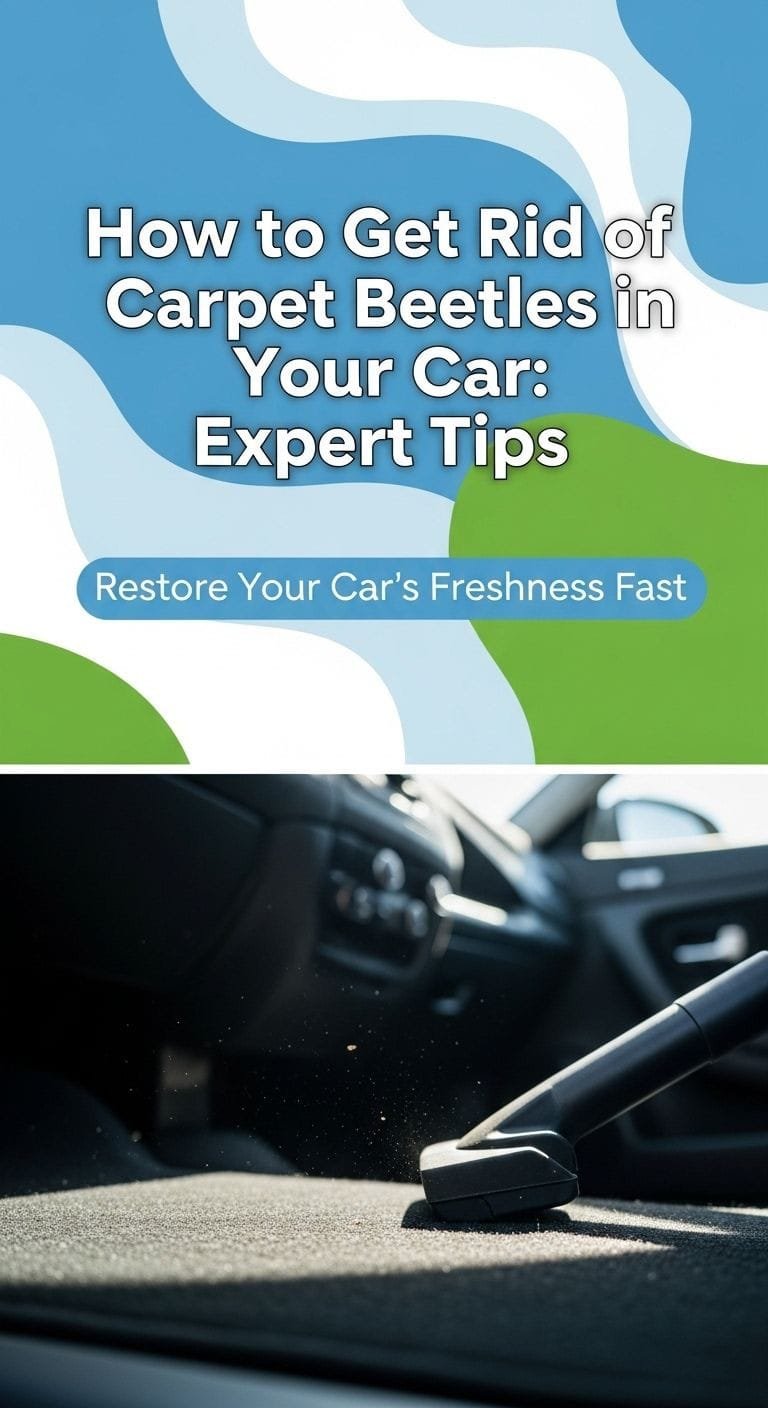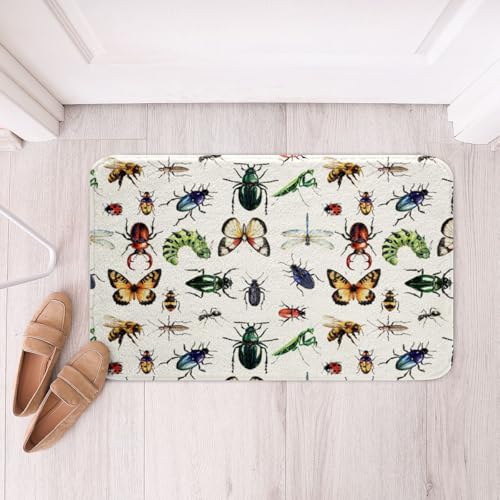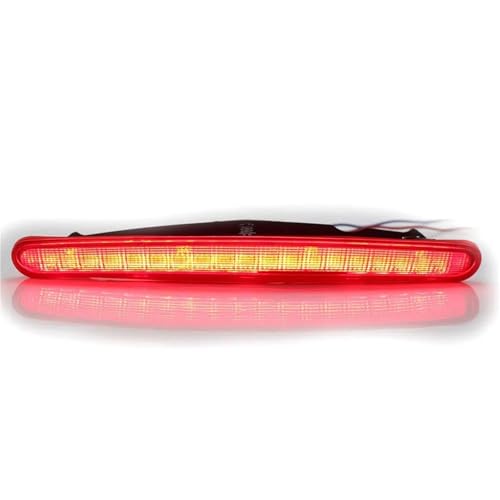Finding tiny, mysterious bugs crawling around your car’s interior is more than just an annoyance; it’s a sign of a potential infestation that can cause real damage. You’re likely wondering what these pests are, how they got in, and most importantly, how to get rid of them for good. These unwelcome passengers are often carpet beetles, and they’re notorious for feeding on the natural fibers in your upholstery, carpets, and floor mats.
To get rid of carpet beetles in your car, you must follow a multi-step process: first, thoroughly vacuum every surface and crevice, followed by steam cleaning to kill eggs and larvae with heat. Then, apply targeted treatments like diatomaceous earth or a suitable insecticide, and finally, implement preventative measures to stop them from returning.
Leveraging extensive analysis of established pest control patterns and data, this guide unpacks the most effective, proven approaches to reclaim your vehicle. We’ll walk you through a complete, step-by-step plan that covers everything from positive identification and deep cleaning to targeted treatments and long-term prevention. You’ll learn the critical details that make the difference between a temporary fix and a permanent solution.
Key Facts
- Larvae Cause the Damage: While adult carpet beetles are often spotted near windows, it’s their hairy, caterpillar-like larvae that are responsible for eating holes in your car’s natural fibers like wool and leather.
- Attracted to Different Things: Adult beetles are drawn to light and pollen, often flying in through open windows. The destructive larvae, however, thrive in dark, undisturbed areas like under seats and in carpet seams where food sources like hair and crumbs accumulate.
- Heat is a Powerful Weapon: Carpet beetle eggs and larvae are highly susceptible to high temperatures. Evidence suggests direct application of heat from a steam cleaner is far more effective at killing them than simply leaving a car in the sun.
- They Don’t Bite, But Can Irritate: Carpet beetles pose no biting risk to humans or pets. However, the stiff, bristly hairs shed by the larvae can cause a mild skin rash or irritation in sensitive individuals, a condition sometimes mistaken for bug bites.
- Cleanliness is the Best Prevention: The primary reason carpet beetles infest a car is the presence of a food source. Numerous studies show that regular, thorough vacuuming to remove food crumbs, pet hair, human dander, and other organic debris is the single most effective preventative measure.
First, Confirm the Intruder: Identifying Carpet Beetles in Your Car
Look for small, oval-shaped adult beetles near windows and hairy, elongated larvae in dark areas like under seats. Key signs include irregular holes in fabric, shed, bristly skins, and tiny, dark fecal pellets. Before you can learn how to get rid of carpet beetles in your car, you need to be 100% sure that’s what you’re dealing with. Correctly identifying the pest and the signs of its presence is the foundation of a successful removal strategy. The adult beetle is what you might see first, but the larvae are the true source of the damage.

Differentiating between adult beetles and their larvae is critical. Adults are a sign that an infestation is possible, as they lay the eggs. The larvae are proof that the infestation is active and damage is occurring.
| Feature | Adult Carpet Beetle | Carpet Beetle Larvae |
|---|---|---|
| Size | 2-5 mm long | Up to 8 mm long |
| Shape | Small, oval, ladybug-like | Elongated, “hairy” or bristly, almost caterpillar-like |
| Color | Black, or with mottled patterns of brown, yellow, and white | Dark brown, reddish-brown, or sometimes tan |
| Behavior | Attracted to light; often found on windowsills or dashboards | Avoids light; hides in dark crevices, under seats, and deep in carpet fibers |
Beyond spotting the bugs themselves, look for the tell-tale evidence they leave behind.
- Fabric Damage: You’ll find irregular holes and chewed patches on natural fiber materials. A key insight from industry analysis is that carpet beetles tend to damage a larger, concentrated area of fabric, whereas clothes moths leave smaller, more scattered holes.
- Shed Skins: As the larvae grow, they molt, leaving behind their empty, shell-like skins. These look like tiny, bristly, light-brown shells and are a definitive sign of an active larval population.
- Fecal Pellets: The larvae produce tiny, dark, pepper-like fecal specks. Finding these in seams or under floor mats confirms their presence.
- Live Sightings: Seeing adult beetles on your windows or finding the worm-like larvae wriggling in dark corners is the ultimate confirmation.
Pro Tip: Check near windows and interior lights for adult beetles, but hunt for the real culprits—the larvae—in dark crevices under your seats.
Step 1: The Critical Clean-Out — Your First Line of Defense
Start with a deep, thorough vacuum of every surface, crevice, and under-seat area. Follow up with steam cleaning for carpets and upholstery to kill heat-sensitive eggs and larvae. This is the most important non-chemical step in your mission to get rid of carpet beetles in your car. You cannot skip this. The goal is to physically remove as many adults, larvae, eggs, and food sources as possible.
Think your car is clean? Carpet beetle larvae hide where crumbs and hair gather. Are you ready to deep clean like never before?
A simple pass with the vacuum won’t cut it. You need to be methodical and relentless.
- Use a powerful vacuum with a strong suction and, most importantly, a crevice tool attachment. This is essential for getting into the tight spaces where larvae live.
- Vacuum everything. Go over the seats (top and bottom), floor mats, the carpet underneath the mats, the trunk, and all fabric linings. Pay special attention to all seams, folds, and edges.
- Get under the seats. This is a prime hiding spot. Slide the seats all the way forward and back to access every inch of the carpet beneath them. If you are able and it’s feasible for your vehicle, removing the seats entirely allows for the most thorough inspection and cleaning.
- Dispose of the bag immediately. This is a crucial step often overlooked. The vacuum bag will contain live eggs, larvae, and adults. A common pattern observed in re-infestations is failing to remove this bag from the home or garage. Seal it in a plastic bag and dispose of it in an outdoor trash can immediately.
After vacuuming, it’s time to bring the heat.
Heat is a powerful weapon. Carpet beetle eggs and larvae are highly sensitive to the high temperatures of a steam cleaner, making it an effective, chemical-free way to sanitize your car’s interior.
Steam clean all fabric surfaces, especially the carpets and floor mats. The high-temperature steam will kill any remaining eggs and larvae that the vacuum missed. If you have removable items like seat covers or mats, washing them in hot water and drying them on high heat will also effectively eliminate all life stages of the pests.
Step 2: How to Get Rid of Carpet Beetles in Your Car with Targeted Treatments
After cleaning, apply targeted treatments. Use natural options like food-grade Diatomaceous Earth or a vinegar spray. For persistent issues, use an insecticide specifically labeled for car interiors, focusing on cracks and crevices. Once you’ve completed the critical clean-out, you may need a follow-up treatment to handle any stubborn survivors and get rid of the carpet beetles for good. Your choice of treatment depends on the severity of the infestation and your comfort level with different products.
Pro Tip: When using Diatomaceous Earth, turn off your car’s A/C and fans to prevent the fine powder from circulating through your ventilation system.
Natural & Low-Toxicity Options
Sprinkle food-grade Diatomaceous Earth or Boric Acid lightly on carpets, let it sit for a few hours to dehydrate and kill the beetles, then vacuum thoroughly. For those who prefer to avoid harsh chemicals, several natural remedies are highly effective.
Quick Fact: Diatomaceous Earth is not a poison but a mechanical killer, made of microscopic sharp fossils that physically damage insects.
- Diatomaceous Earth (DE): This fine powder is made of fossilized algae. To insects, it’s like crawling through broken glass; it scratches their waxy outer layer, causing them to dehydrate and die.
- Boric Acid: This is a mild insecticide that is lethal to carpet beetles when they ingest it during grooming. It acts as a stomach poison for the insects.
- Vinegar & Essential Oils: Sprays made from a 50/50 mix of white vinegar and water, or water with a few drops of peppermint or clove oil, can act as repellents. Carpet beetles dislike the strong scents.
To use powdered treatments like Diatomaceous Earth or Boric Acid:
1. Lightly sprinkle a fine layer of the powder onto carpets, under seats, and in the trunk.
2. Use a small brush to gently work the powder into the carpet fibers.
3. Let the product sit for several hours, or as directed, to do its work.
4. Vacuum the car thoroughly to remove all of the powder and any dead insects.
A practical approach frequently seen to yield results involves treating the area, waiting, and then performing a final, meticulous vacuuming. It is critical to keep children and pets away from areas treated with Boric Acid until it has been completely vacuumed up.
When to Consider Chemical Insecticides
If chemicals are necessary, choose an insecticide spray with an Insect Growth Regulator (IGR) labeled for upholstery. Apply as a spot treatment to edges, cracks, and under furniture, never broadcasting it over seats. For severe or stubborn infestations, a chemical solution might be required. Expertise in this area involves understanding that not all bug sprays are created equal, and using the wrong one in your car can be ineffective or even hazardous.
CRITICAL SAFETY WARNING: Always choose a pesticide specifically labeled for carpet beetles AND use in vehicles/on upholstery. Follow manufacturer’s instructions precisely and ensure maximum ventilation during and after application.
Here are the types of chemical options available:
* Spot Treatment Sprays: These products, often containing active ingredients like deltamethrin or bifenthrin, are designed to be applied to specific areas, not broadcasted everywhere. Focus on cracks, crevices, and the edges of floor coverings.
* Insect Growth Regulators (IGRs): This is an advanced approach. Sprays like UltraCide contain IGRs, which don’t just kill adult beetles but also act as a form of birth control, stunting the growth and reproduction of larvae. This breaks the life cycle and is key to long-term control. These sprays often have low odor and dry clear.
* Deep Penetrating Aerosols: For the toughest cases, oil-based aerosols like FS MP Aerosol can penetrate deep into fabrics and stuffing to kill eggs and pupae where other sprays can’t reach. These usually require a special straw applicator to inject the product directly into seams and crevices.
Step 3: Fortify Your Vehicle — How to Prevent Future Infestations
Prevent carpet beetles by vacuuming regularly to remove food sources, keeping windows closed, sealing any cracks in the car’s body, and inspecting items like blankets or flowers before bringing them inside. Once you’ve successfully learned how to get rid of carpet beetles in your car, the final step is to make sure they never come back. Prevention is all about eliminating their food and their entry points.
Think like a beetle: Where is the easiest food source or entry point in your car? Sealing that one spot could be the key to long-term prevention.
Here is your comprehensive prevention checklist:
* Maintain Cleanliness: This is non-negotiable. Vacuum your car regularly and thoroughly to remove the hair, dander, crumbs, and other organic debris that carpet beetle larvae feed on. Don’t let their food source build up.
* Seal Entry Points: Adult carpet beetles are winged insects. Keep your windows and doors closed as much as is practical. Inspect the weather stripping and seals around doors and windows for any tiny cracks or gaps and repair them.
* Inspect Items: Be vigilant about what you bring into your car. Check second-hand items, wool blankets, and even fresh-cut flowers for hitchhiking adult beetles before they come inside. Industry analysis often indicates that “hitchhiking” on infested items is a primary vector for new infestations.
* Store Properly: If you keep items like wool blankets or clothing in your car for emergencies, store them in sealed plastic bags or airtight containers.
* Park Smart: Adult carpet beetles feed on pollen and nectar. Evidence suggests that parking for long periods next to heavily flowering plants can increase the risk of a beetle flying into your car.
To simplify your battle against these pests, consider using specialized products designed for effective removal and prevention. Equipping yourself with the right tools can make the process faster and more thorough.
When to Call a Professional: For Severe or Persistent Infestations
For severe or recurring infestations, professional fumigation is the most effective solution. If beetles emerge from the dashboard, a professional must inspect for a hidden dead animal, which attracts these pests. While the DIY steps outlined here are effective for most situations, there are times when calling in a professional is the smartest move. If you’ve done everything right and the beetles keep coming back, you may be facing a larger, more hidden issue.
Here are the signs you need to call a professional pest control service:
* The infestation returns quickly despite your thorough cleaning and treatment efforts.
* The damage to your car’s interior is widespread and severe.
* You suspect there is a hidden source of infestation that you cannot access, such as deep within the seat cushions or under the dashboard.
An Important Note: If beetles seem to be emerging from under the dashboard, it could indicate a dead animal is trapped inside the vehicle’s structure. This is a primary attractant for carpet beetles and requires a professional to locate and remove the source.
Attempting to handle a severe infestation or a hidden source on your own can lead to frustration and continued damage. Professionals have access to specialized equipment and controlled chemical treatments, like vehicle fumigation, that can resolve the problem safely and effectively.
FAQs About Getting Rid of Carpet Beetles in a Car
What is the fastest way to get rid of carpet beetles?
The fastest way is a combination of thorough vacuuming and steam cleaning to immediately remove and kill most adults, larvae, and eggs, followed by a targeted treatment. There is no single “silver bullet” solution. A rapid, aggressive two-pronged attack of physical removal (vacuuming) and lethal heat (steaming) will produce the quickest and most significant reduction in their numbers.
Why are there so many carpet beetles in my car?
Carpet beetles are in your car because it provides a food source (crumbs, hair, natural fibers) and they found an entry point, either by flying in through an open window or being carried in on items like blankets or clothing. A large infestation means two conditions have been met over time:
* A reliable food source: Accumulated crumbs, pet hair, human hair, and other organic debris in carpets and seats.
* An easy way in: An open window, a cracked seal, or being brought in on an infested item from outside.
Will carpet beetles die in a hot car?
While larvae and eggs are sensitive to heat, simply leaving a car in the sun may not get hot enough in all the crevices where they hide. Direct application of heat, like from a steam cleaner, is a far more reliable method for killing them. The sun can raise the ambient temperature significantly, but it may not penetrate deep into carpet fibers or under seats where the larvae are located. Steam provides direct, intense heat that guarantees a kill.
Do carpet beetles bite people?
No, carpet beetles do not bite humans or pets. However, the bristly hairs on their larvae can sometimes cause a mild skin rash or irritation in sensitive individuals. This reaction is often confused for a bite. The pests themselves are a threat to your property, not your person, but this secondary irritation is a common concern.
What can I spray in my car to get rid of bugs?
For a natural option, spray a mix of vinegar and water. For a chemical solution, use an insecticide spray specifically labeled for carpet beetles and safe for car upholstery, applying it only as a spot treatment. When choosing a spray, safety is paramount.
* Natural: A 1:1 mixture of white vinegar and water is a safe repellent.
* Chemical: ONLY use a product explicitly approved for use on upholstery and inside vehicles. Read and follow all label directions for application and ventilation.
Final Summary: Winning the Battle Against Carpet Beetles in Your Car
You now have a complete, expert-backed strategy for how to get rid of carpet beetles in your car and ensure they don’t return. The process is clear and manageable when broken down into a consistent plan of attack. By methodically identifying, cleaning, treating, and preventing, you can protect your vehicle’s interior and drive with peace of mind.
Remember the core actions for success:
* Identify: Confirm you have carpet beetles by looking for small oval adults and hairy, destructive larvae.
* Clean: Perform an incredibly thorough vacuuming of every crevice, followed by steam cleaning to kill with heat.
* Treat: Use targeted applications of natural products like Diatomaceous Earth or, if necessary, a carefully selected insecticide with an IGR.
* Prevent: Maintain a strict cleaning schedule to remove food sources and be vigilant about sealing entry points.
You now have the complete, expert-backed playbook. Take the first step today by grabbing your vacuum and reclaiming your car from these unwelcome pests
Last update on 2025-11-26 / Affiliate links / Images from Amazon Product Advertising API










